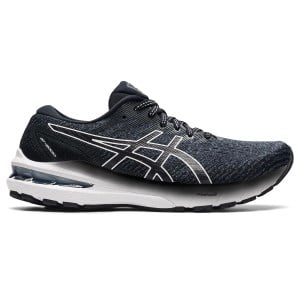Asics GT-2000 10 vs 9 Comparison Shoe Review
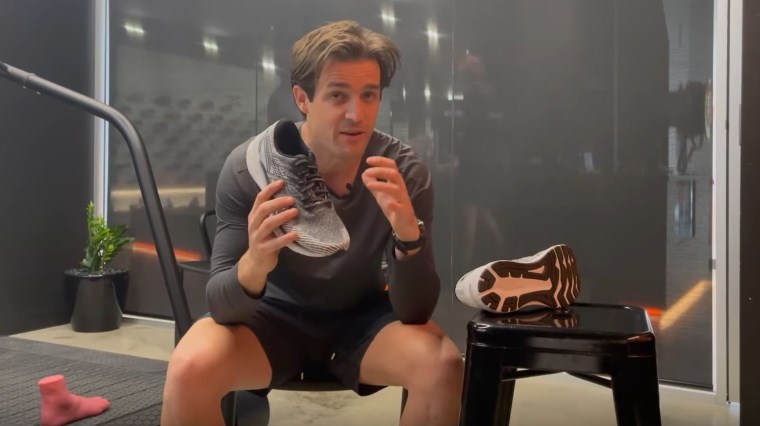
Josh reviews the Asics GT-2000 10 running shoes, a responsive ride with overpronator-friendly engineering to tackle your next 5K, 10K and up, and highlights the changes that make it one of the best updates from Asics over the last three years.
The full ground contact outsole features strategically placed AHARPLUS rubber, protecting high-wear zones from the forces of heel striking to extend its longevity and your comfort.
Asics have shed the Trusstic system of the Asics GT-2000 9 for the new LITETRUSS system for a smooth, stable and consistent sensation underfoot and non-obtrusive arch support. With a combination of FlyteFoam Propel and the shock-absorbing forefoot and rearfoot Gel, you get a game-changing formula of propulsion and protection.
A breathable engineered knit upper with a slightly shallower fit and internal heel counter locks your foot precisely in place, hugging you in support from heel-to-toe. With multiple widths on offer from narrow to extra wide, it's easy to dial in your fit with this stability running shoe providing a more personalised and accomodating ride.
Check out the review with full transcript below.
Hey guys, Josh here from Sportitude Running and it's shoe review time. Today we're going to be talking all things Asics GT-2000 10. You may have realised that I have decided to change up the landscape or the scenery just a little bit. I've come down into one of our two fitting rooms at Sportitude Running and the change is probably on point because the Asics GT-2000 10 has had quite the update.
We're talking a new outsole, there's a lot going on with the new midsole technology and Asics have put a lot of time and effort into what they have executed with their upper.
Like all my reviews we'll talk about where the Asics GT-2000 10 is coming from regarding its predecessor, the Asics GT-2000 9. We'll profile the foot type and also the runner that could be considering this shoe and give you all the information that you need at home to potentially make this your new running shoe. Without further ado let's get stuck in.
Runner Profile
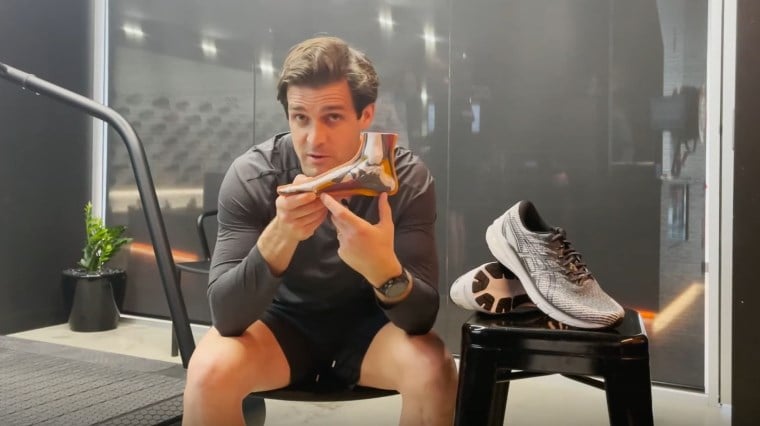
Let's talk about the runner that could be considering the Asics GT-2000 10 running shoes. It still is a very cushioned shoe underneath the body, however if you’re a runner that's seeking more compression, more cushioning and you happen to be an overpronator, you would be looking at the Asics Gel Kayano 28.
If you’re a runner that has a slightly higher cadence, lands a little bit softer but needs arch support and is searching for more of a responsive feel underneath your body, the Asics GT-2000 10 is probably going to be a shoe you should consider.
When we're talking about that overpronated foot type, what does that mean? It means we'll have a static foot where the arches will splay out and be relatively close to the ground. When this runner contacts the ground at the heel and transitions through to the midstance phase, they'll have a tendency to favour that medial side before the foot gets ready to then toe-off.
If you happen to be a midfoot runner which I am, you'll land midfoot first, but again you'll see that lateral to medial transition as you get through your midstance phase of your gait cycle, and then as you get ready to toe-off.
Outsole
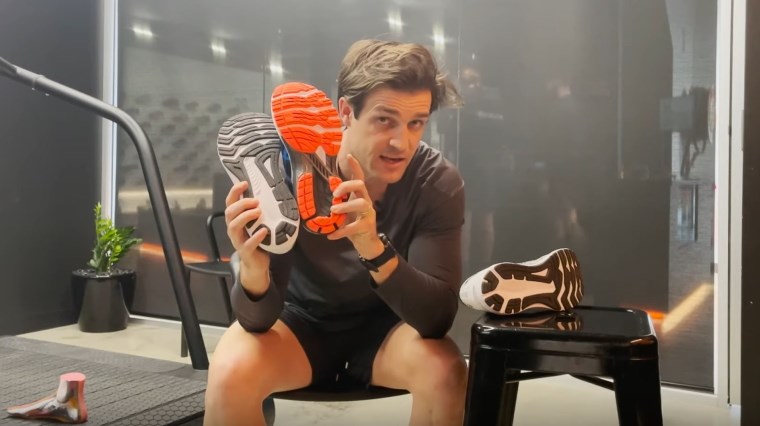
Let's talk about the Asics GT-2000 10 and like all my shoe reviews, let's start from the ground and work our way up. Talking about the outsole, there is full ground contact from the heel right through to the forefoot, so there has been quite the change in the outsole in comparison to the Asics GT-2000 9.
Traditionally Asics have used a Trusstic system which splits the heel engineering and the forefoot engineering of that outsole. The Trusstic system has been used to aid in that deceleration phase of your gait cycle. When the runner comes down heel first and goes through midstance, that Trusstic system kicks in and slows down or aids that support system for that overpronator as the foot gets ready through midstance then to toe-off. It's quite the change when you're looking at the Asics GT-2000 10.
There's a couple of things to dial in on when we're looking at the engineering components with the Trusstic system on the Asics GT-2000 9 in comparison to the LITETRUSS in the Asics GT-2000 10. The LITETRUSS covers a fair bit of that medial side of the shoe, so it works in unison with that arch support which we'll talk about in two ticks in the midsole.
It comes through a little bit further up on that medial side, almost just before your first metatarsal underneath your foot. That LITETRUSS system provides a very consistent feel underneath the body but also a very smooth and stable transition through midstance.
Talking about the outsole, we can't leave out the fact that there are different densities of rubber. Asics have used AHARPLUS rubber on the back of the shoe, remembering this shoe is designed for a heel striker. Heel strikers tend to hit the ground a little bit harder which is perfectly fine, hence why we have a harder rubber on offer at the back of the shoe.
Coming through to the forefoot, the other noticeable change is the fact we have four flex grooves from that lateral to medial side regarding the forefoot construction in comparison to three flex grooves last year.
Why we're seeing this change with the four flex grooves on offer in the forefoot is because it works better with the FlyteFoam Propel technology and it also works a lot better with the new LITETRUSS system. If you had four flex grooves on offer in the Asics GT-2000 9 through the forefoot with its Trusstic system and also the same engineering at the back of the shoe, it would not have had a consistent feel under the body. You would’ve noticed that Trusstic system too much.
Midsole
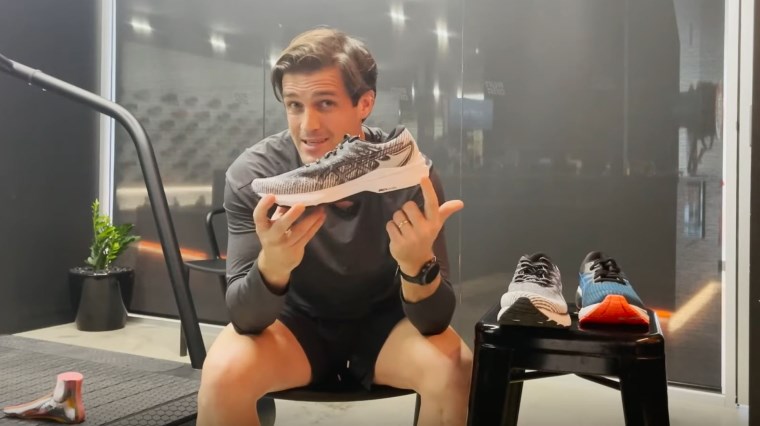
Let's talk about the midsole now with the Asics GT-2000 10. We have the exposed Gel cushioning which is on offer at the back of the shoe which is a 3D printed technology. It is gender-specific and I like when brands manufacture cushioning systems and support systems to cater for different genders.
Obviously, they put a bit more time and effort into how they execute their support and their cushioning system. On top of the 3D exposed Gel we have FlyteFoam Propel technology and underneath that Gel cushioning system is just the FlyteFoam cushioning system.
Again, the FlyteFoam underneath the Gel is a softer geometry of foam. It's going to dampen a little bit more and the FlyteFoam Propel system like its namesake is going to be more responsive as you transition through to that forefoot.
The other thing to call out is the LITETRUSS on the medial side. As we touched on in the intro, there is a slightly new take on the Trusstic system and a new take on the arch support. What Asics have done for a number of years now is have DuoMax called out on the medial side and then that Trusstic system underneath the shoe itself and the outsole.
It uses these two different technologies working together to produce the ultimate outcome for the overpronator. Asics have combined those two entities into one now. The LITETRUSS is a system that works with the outsole and the midsole to provide that arch support that an overpronator is seeking in their running shoe.
I'll touch on that in two ticks because when you put a shoe on your foot, you want to know straightaway what it's going to feel like. When I put my foot into the Asics GT-2000 10 it felt like a stable neutral shoe.
It didn’t feel like I had a shoe with arch support built-in and I think that's a good thing. The reason being is the shoe itself performed just as well if not better than the Asics GT-2000 9 in my opinion, and we had a couple of other runners also test this shoe at Sportitude Running.
Looking at the change in arch support it can be a little bit daunting and scary, especially for an Asics consumer. Asics like Brooks are probably your most loyal-to-brand runners, especially here in Australia. When there is a little bit of change within the shoe they want to know why is there change and is it justified.
The LITETRUSS system is just as good if not better. It provides a more consistent ride the whole way through that midsole, and it provides a very stable, comfortable fit. I think Asics have absolutely nailed the brief when it comes to the midsole.
While we're talking all things midsole, let's just touch on the ever so slight change with regards to the heel-to-toe drop. We have 22mm in the heel and 14mm on the forefoot for a variance of 8mm. That's the same for the men's and women's model in this shoe, in comparison to last year when it was a 10mm heel-to-toe drop.
The subtle change with that heel-to-toe offset is more to do with the execution of the outsole and the midsole with that new LITETRUSS technology. It works really smoothly the whole way through your transition.
Upper
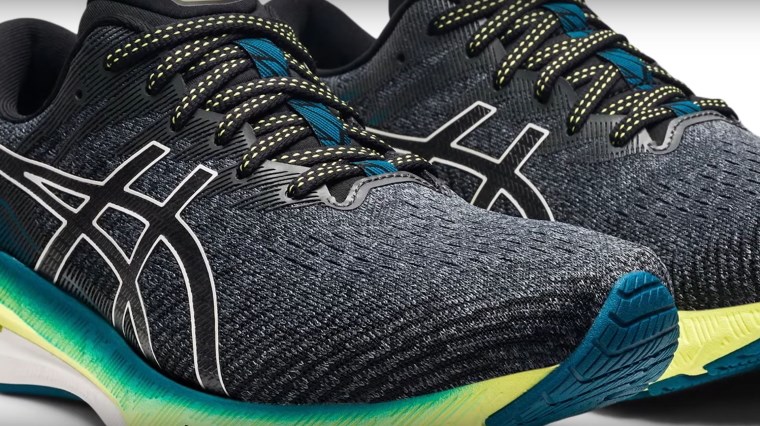
Let's talk about the upper. One of my favourite features of this shoe is the upper. It's hard to talk about outsoles and how they work, I like what they've done with the midsole but I think they've absolutely nailed the upper.
It has a completely new knitted technology up top. Traditionally Asics have used either an engineered mesh or a jacquard mesh with this shoe and have relied on overlays to provide a little bit more support.
With this engineered mesh you don't need as much reliance on overlays, so therefore you can put a little bit more effort into the support system of this shoe to get the lockdown that you require to keep you on top of that platform.
The shoe in my opinion probably fits a little bit shallower through the toe box and I think that’s a good thing. Last year in the Asics GT-2000 9 and if we go back to the version 8 and version 7 of this shoe, there was a bit of volume through the forefoot.
There was some runners who absolutely love that but for that first fit and feel, you want everything to hug you in the right areas and give you the right support. The Asics GT-2000 10 is going to provide that up top. Again, it’s a bit shallower and a slightly more secure fit which is a good thing.
As you come through to the midpart of this upper, I was expecting a gusseted tongue because I love gusseted tongues. However, when I ran in this shoe it wasn't until after getting it off my foot that I realised it didn't have a gusseted system.
That's probably a good thing as there is no need or reliance on having a gusseted tongue. They have executed enough support and enough of a lockdown through that midsection to provide the support that you require when you're going through midstance.
Coming back to the heel counter, it's something that Asics will not want to compromise with in this shoe. You want a nice and strong structured heel counter. There is an internal heel counter around the back of the shoe that gives the calcaneus or heel enough support, locks you in and keeps you stable when you come down and land. You won't have too much movement at all across that heel as you transition through to your midfoot to get ready to toe-off.
The memory foam on the inside of this heel collar is just enough. I think some brands overdo it and I haven't seen it too much in the last 12 to 18 months. Brands are starting to realise that when you put too much foam in the back of this heel collar it becomes less comfortable. It provides too much of a suffocation for the back of the calcaneus or your heel. There is the right amount of memory foam in the Asics GT-2000 10 to get a comfortable, secure and snug fit but not overdoing it at all.
The other thing to be called out like all Asics shoes is the extra eyelet at the back. If you're a runner that likes to get a little bit more of a lockdown at the back of the heel, you can come back use that last hole or alternatively use a heel lock lacing system to get the secure fit that you require.
Widths
The other thing to call out is the widths. You have three widths on offer in the men's model with a standard D width, 2E width and a 4E width which is really important. Asics have changed a bit of the engineering, but they certainly won't veer away from the fact they like to make their key shoes available in multiple widths.
In the women’s model they've gone one step further with a 2A which is narrow, a B standard, D which is a marginally broader and they also offer a 2E which is the extra wide width.
I want to touch on the 2A width and tip my hat to Asics because in this market for the last two to three years we've seen 2A widths just drop off. While I understand the decision of Mizuno to drop the 2A width from their Mizuno Wave Inspire franchise and with your New Balance Fresh Foam 860, it's been a critical one for us over the last couple of years when we're looking for that 2A narrow fit.
We used to have a few more options to throw out as considerations for our runners, but Asics have stuck to their guns. Yes, it's a minority width as Asics and other brands have called it, but for those minority runners that have a narrow foot that also need a secure fit and arch support, they haven't had too many options.
The great thing about Asics is they're continually producing most of their top end running shoes in available widths, and especially the 2A width for women which is a good thing for us shoe fitters to fit with confidence. The Asics GT-2000 10 is going to be available in a 2A width yet again.
The Wrap Up
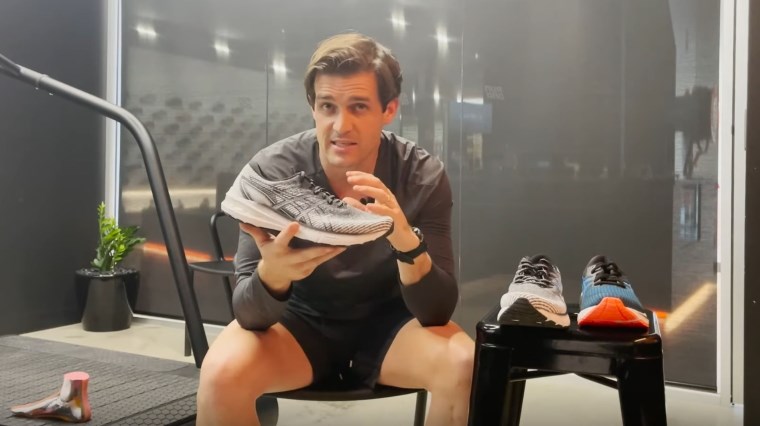
In summary it's really important to know that while Asics have been a brand that has been super consistent from each model to the next, there is a bit of change with the Asics GT-2000 10. However, while there is a bit of change with the outsole, midsole and the upper, the shoe itself performs incredibly well.
This is probably the best update from an Asics shoe over the last three years in my opinion. We know this running shoe is catering for that overpronator and heel striker to potentially midfoot runner with a slightly higher cadence that's not necessarily seeking lots of cushioning, but wants more of a responsive feel. That filters in who would be looking at this shoe.
It’s a very comfortable shoe. I've taken it from a couple of 5km runs and I've pushed it out to a 10km run. I haven't gone over 10K just yet in this shoe, but I've got no doubt this shoe is going to perform at higher mileage for most runners that fit this profile.
Like all my shoe reviews, if you have any questions about Asics GT-2000 10 or any of the GT-2000 series, please contact our Sportitude shoe experts.
If you have any other questions about this support category or anything that I've covered off in today's review, just let us know. I love hearing all your feedback across the world and from the runners out there.
Please subscribe to the Sportitude YouTube channel if you haven't already done so to stay notified and we'll keep pumping out the shoe reviews for you the running community across the world.
Until next time stay safe, be kind to one another, happy running and we'll see you on the road. Take care.
FEATURES
- Support: Stability
- Upper: Knit
- Midsole: Asics FlyteFoam Propel
- Heel Height: 22mm
- Forefoot Height: 14mm
- Offset / Drop: 8mm
Men
- Weight: 275g / 9.7oz
- Width: B (narrow), D (standard) and 2E (wide)
Women
- Weight: 235g / 8.3oz
- Width: 2A (narrow), B (standard), D (wide) and 2E (extra wide)

